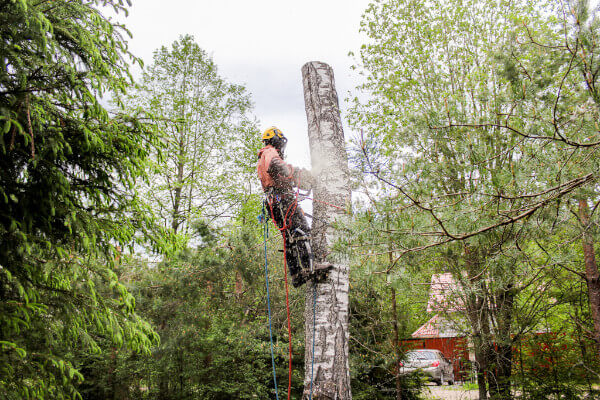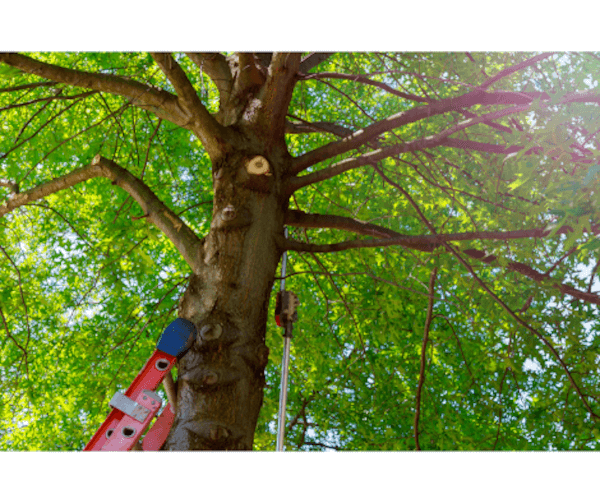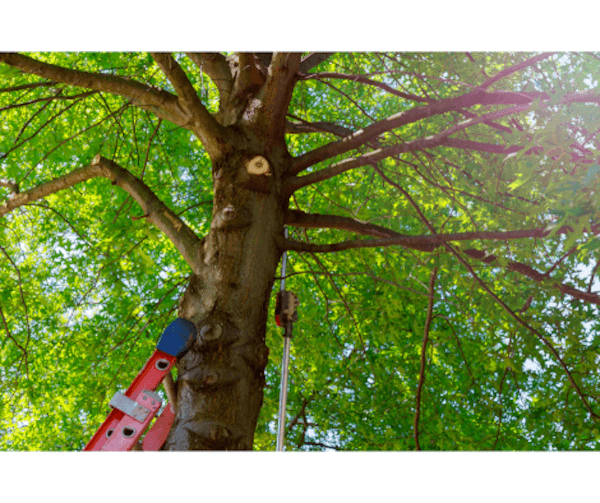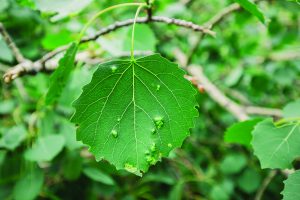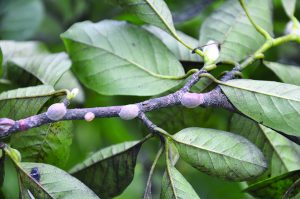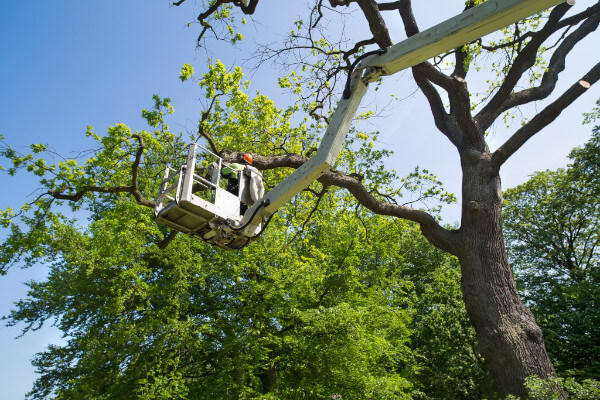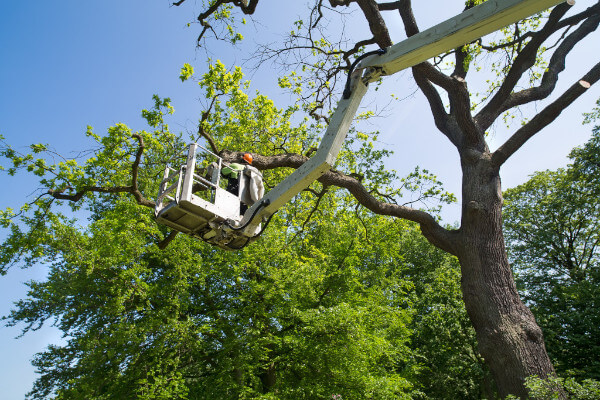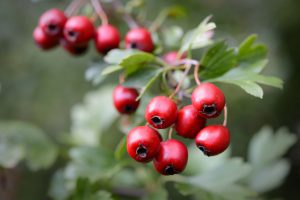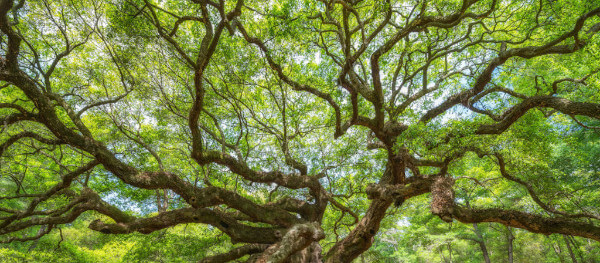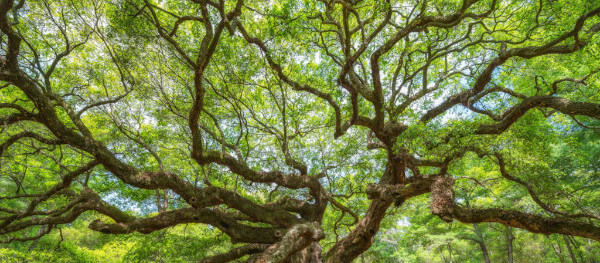Mulching the ground beneath your trees and shrubs is one of the best practices for keeping trees healthy. However, you need to mulch properly for it to truly be beneficial. Never pile mulch against the tree or cover the tree’s root flare, where the trunk flares outward into the ground. Even though a mulch volcano, a large pile of mulch under a tree, is a commonly seen practice, it is not a good one. Mulch volcanoes harm trees!
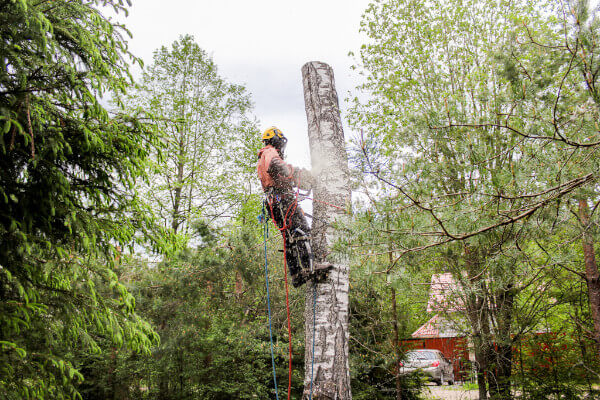
Mulch should be spread in a thin layer beneath the entire canopy.
How to Add Mulch Correctly
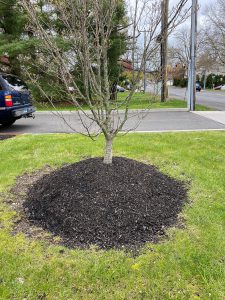
INCORRECT MULCHING! A mulch volcano, where mulch is piled against the tree trunk, traps in moisture and damages the tree.
Whenever possible, you should apply mulch beneath the entire canopy. Mulch beds do not have to be round or symmetrical. The more area beds can cover under the canopy, the better! Mulch should not be deeper than four inches. Two inches will work for shallow rooted shrubs and perennials. As mulch decomposes, add more to maintain the appropriate depth.
One of the best materials to use as mulch is fresh wood chips. Wood chips contain bark, leaves and wood. This mixture is the most nutrient-rich option for the tree. It’s also okay to plant shrubs and perennials under the tree in the mulched area. When planting under trees, avoid solid masses of ground covers that hide buttress roots. Plant ground cover at least twelve inches away from tree trunks.
Mounded mulch and excessive ground cover can trap moisture against the tree’s bark. Stem tissues are not intended to remain moist. Excess moisture promotes the growth of fungal pathogens and disease. Too much mulch or ground cover can also conceal signs of an issue like the fruiting structures associated with root decay fungi.
How Mulch Helps
As you can see, proper mulching is relatively simple. It’s also effective in creating a healthy growing environment for trees. It eliminates competition between tree roots and turf as well as conserving soil moisture and moderating soil temperature. As mulch decomposes into the soil, it helps improve soil structure and reduce compaction.
Mulch beds mean there is less area of your lawn to mow. They also create a visible and physical barrier that can help prevent damage from mowers and trimmers to the tree trunk.
Even though the practice of piling mulch against the tree like a mountain or volcano has become so common that some professionals think it is acceptable or desirable, it is not. Just remember, mulch is one of the best things you can do for your trees, but only if you do it right!
The post Mulch Volcanoes Hurt Trees first appeared on Tree Topics.
